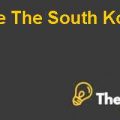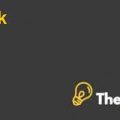
Introduction
Since the market for the mutual funds were on an inclining trend, the companies in the business of Asset management Industry were looking for expansion in their current portfolios. Same was the case with Saxon Financials and IGM. They were operating their businesses in the Asset management Industry in Canada, which was divided into three broad categories: institutional asset management, private clients and mutual funds.
Problem Diagnosis
IGM was the second largest mutual fund asset under management manager in the Canadian market with 15% share in the whole mutual fund market of Canada. The company was labeled as the buyer, this was because the company was leading the entire world of assets management, however, the performance in terms of the share prices had been under tremendous pressure from the last 12 months.
Due to these reasons, the IGM Company was not able to perform well. The reasons included, low net inflows into its mutual funds, decline in the total asset under management (AUM) in the Canadian Market and decline in the ranking in the list of companies with higher organic growth rate.
Pro and Cons of the Acquisition
In order to tackle the above mentioned problems, the management of the company has decided to expand its presence in the institutional market and in the private client sector known as HNWI after looking at the growth in the respective sectors. They found Saxon Financials, who was in the business of all three segments. The company was one of the major players in the institutional sector. By acquiring Saxon Financials, the IGM Company would be able to enhance its deficiencies in the institutional market, but since, the Saxon was not ranked even in the top 25 firms, due to its small size, it would be hard for the shareholders and the competitors to accept the deal.
On the other hand, the Saxon Financials was enjoying a strong distribution channel, which would be a concern for the management of the IGM. Saxon Financials have a relatively small division of private clients which provide discretionary and flexible investment management to high net worth individuals. The management of IGM expected that, by acquiring Saxon Financials, they would be able to enhance their current position in the market, but they were also concerned about the financial health of Saxon Financials and their relatively small business.
Valuations
Discounted Cash Flows
We have conducted an analysis to find out the per share value of the Saxon Financials on the basis of different valuation methods. First and foremost method used for valuing the worth of Saxon Financials was Discounted Cash Flow method. In this method, we have calculated the estimated and expected a 5-year growth in revenues, in both with synergies and without synergies cases.
As stated in the case, a significant decrease of 10% in the revenues from the revenues of 2007 was observed in 2008, because of the difficult capital market situation, but there was a sudden increase of 16 per cent in 2009 which was followed by an increase in the revenues, however, there was a decrease of 6%, 5% and 4% in the year of 2010, 2011 and 2012 respectively and then the terminal value concept was applied.
It was mentioned in the case study that the management of the Saxon Financials agreed to maintain 45% margin as earnings before interest and taxes (EBIT). The company has been all equity financed, which meant that there would be no such thing with the name of interest.
The tax rate was approximately 34.5% throughout the projected time. Before calculating discounted cash flows, we were forced to find out the appropriate discounted rate first. Therefore, on the basis of case assumptions, the risk free rate was 3.66%, whereas, market premium was 7.42% and two years beta of Saxon Financials was 0.62.
Since, the company was equity financed, i.e. there was no kind of debt shown on their balance sheet. Therefore, the Cost of Equity was used as the Weighted Average Cost of Capital with the help of Capital Asset Pricing Model approach.
For the sake of terminal value at the end of the projected life, the case assumption of 4% perpetuity growth was used and the free cash flow of 2012 year was increased by the assumed growth rate and then divided by the difference of discount rate i.e. WACC and the growth rate.........................
This is just a sample partial case solution. Please place the order on the website to order your own originally done case solution.
Analyst at IGM Financial (IGM) are asked to make out the final details of the proposed acquisition of Saxon Financial (Saxon). This analysis should include the strategic rationale for the acquisition, evaluation of the bid proposals for Saxon and whether the acquisition will be accretive to earnings per share of IGM. Analyst for the job was to calculate a preliminary assessment of the range based on multiple valuation techniques. "Hide
by James E. Hatch, James Mazur Source: Richard Ivey School of Business Foundation 20 pages. Publication date: 07 May 2009. Prod. #: 909N12-PDF-ENG













